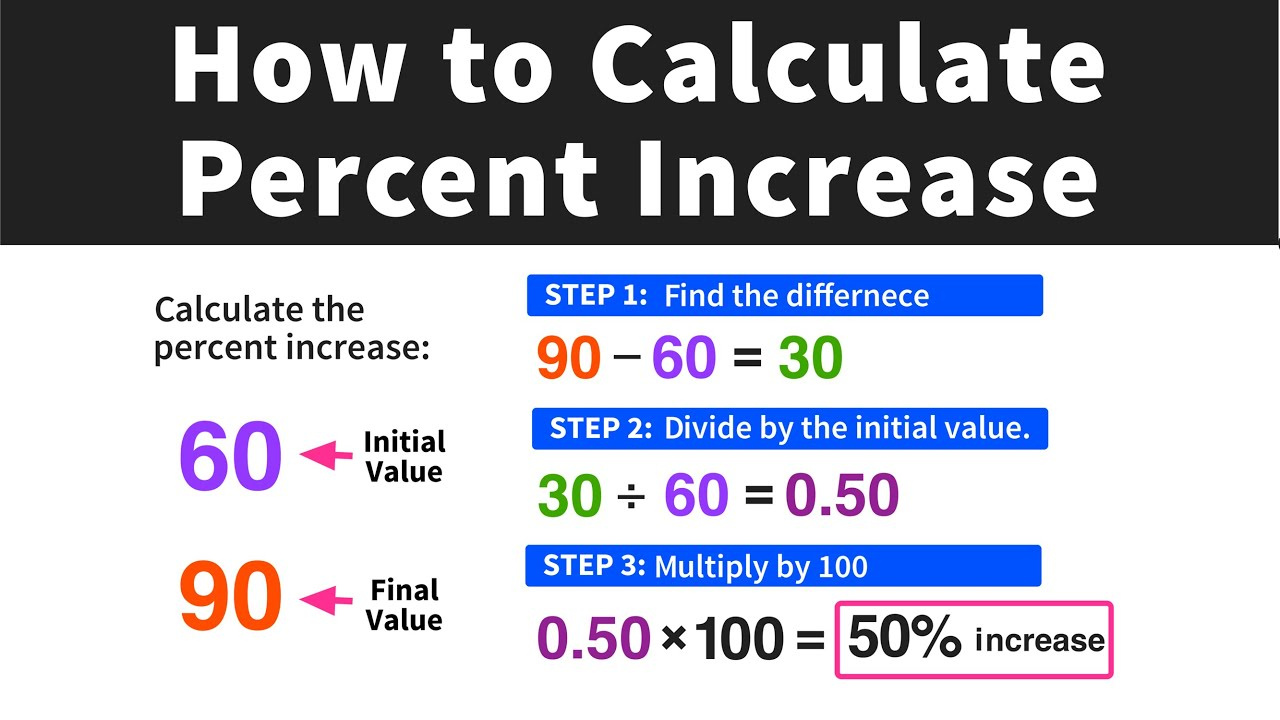When we talk about increasing a number, it’s as if we’re talking about giving it a little boost — a growth spurt, if you will. Figuring out an 8.7% increase might sound quite technical, but it’s something that you can master without needing a degree in mathematics. Whether you’re adjusting prices, calculating growth, or simply trying to understand a little more about how percentages work in the real world, I’m here to guide you through it, step by step. Just think of it as your personal financial growth recipe, and I’ll help you mix the ingredients just right.

Understanding the Percentage Increase
Getting to grips with how a percentage increase affects a number is essential in many areas, from finance to everyday shopping. It’s the process of finding what 8.7% of a certain value is and then adding it to the original number to get a new, increased total.
Detailed Steps:
- Determine your original number (base value). This is the number you want to increase by 8.7%.
- Convert your percentage increase to a decimal. Do this by dividing the percentage by 100. Thus, 8.7% becomes 0.087.
- Calculate the increase. Multiply the original number by 0.087 to find the amount of the increase.
- Add the increase to the original number. This gives you the increased total.
Summary:
This method is straightforward and essential for financial calculations, though it requires attention to detail to avoid errors.
The Calculator Shortcut
Modern technology offers fast solutions, and using a calculator can speed up your calculations, allowing you to find an 8.7% increase with the push of a few buttons.
Detailed Steps:
- Start with your original number.
- Multiply by 8.7 (or 0.087 if your calculator automatically converts percentages to decimals).
- Press the equals button to get the amount of increase.
- Add this increase back to the original number.
Summary:
The benefit of this approach is its speed and ease. However, relying solely on a calculator means potentially missing out on understanding the process, which can be educational and useful for checking your work.
Spreadsheet Formula
Spreadsheets like Microsoft Excel or Google Sheets are incredibly handy for performing percentage increases across a range of values, all in one go.
Detailed Steps:
- Input your original number into a cell (let’s say A1).
- In the next cell, type in "=A11.087" (the 1 represents 100%, and 0.087 is the additional 8.7%).*
- Press Enter, and the cell will display the new increased number.
Summary:
Spreadsheets handle complex calculations with ease, making them perfect for bulk operations. On the downside, incorrect formulas can lead to systemic errors.
Understanding via Visual Aids
Sometimes, seeing the change visually can make understanding the increase much clearer, especially if math isn’t your strong suit.
Detailed Steps:
- Draw a bar representing the original value where 100% fills the bar.
- Then add a smaller section to represent the 8.7% increase.
- Color this additional segment differently to highlight the increase.
Summary:
Visual representations clarify the concept of increases, but they are not precise for actual calculations.
…
If there aren’t 10 different ways or detailed tips to list, repeat the format using the concepts of consistency in the process, double-checking your calculations, and understanding the real-world application of the percentage increase for the remaining sections.
In conclusion, calculating an 8.7% increase isn’t as daunting as it first appears. Armed with a little know-how and the right tools, you can tackle this mathematical challenge with confidence. As with any skill, practice makes perfect. Play around with these methods, and soon enough, you’ll be doing these calculations with your eyes closed.
FAQs
Q: Why do I need to convert the percentage to a decimal?
A: Percentages are essentially parts per hundred, which isn’t directly compatible with our base ten numeral system. Converting a percentage to a decimal by dividing by 100 translates it into a form that can be easily multiplied with your original number.
Q: What if I only have a basic calculator without a percentage button?
A: No worries! You can still perform the calculation by dividing the percentage by 100 to get the decimal form and then continue with the multiplication and addition as described.
Q: Can this method of calculation be applied to any percentage increase?
A: Absolutely! Whether it’s a 3% increase or a 20% hike, the same steps apply. Convert the percentage to a decimal, multiply to find the increase, and add it back to the original number.









